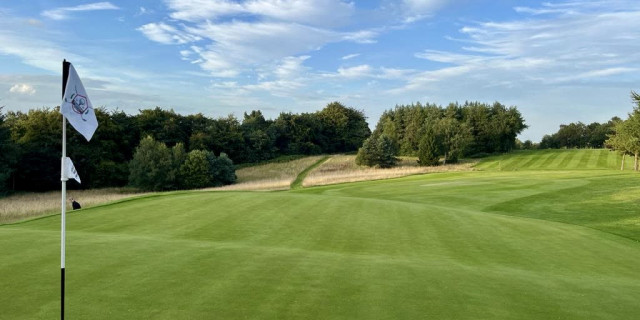Sandhill cranes are large birds with long necks and spindly legs. True to their name, they favor sandy settings, where they spend most of their days in groups and pairs. Their coloring is grayish. Their diet is plant-based. And their call, which has been likened to a rattling bugle, is written as karoo.
In southwest Florida, where sandhill cranes reside in large numbers, karoo is also a spoken word, uttered frequently at Cabot Citrus Farms, a marquee player in destination golf. Along with two short courses, a putting course and a tricked-out practice facility, the luxe resort and residential community has a pair of standout 18-hole layouts. The elder of them, now approaching its second birthday, goes by the name Karoo.
The course was designed by Kyle Franz, who cut his teeth under Tom Doak and Gil Hanse on projects ranging from Pacific Dunes in Oregon to the Olympic Course in Rio before striking out on his own. His résumé features acclaimed restorations of Mid Pines, Pine Needles and Southern Pines, a trio of Donald Ross gems in the Carolina Sandhills. Franz has a big personality. He’s effusive, expressive and unafraid to color outside the lines. His work at Cabot Citrus Farms follows suit.
By his own account, Franz set out to do something different at Karoo. His aim was to be creative, not to mimic his mentors. He was out to make a statement. Above all, he told GOLF.com, “I wanted to build something really fun.”
As introductions go, Karoo’s opening hole is less a handshake than an in-your-face hello. A par-4 that tips out at 475 yards, it plays over a minefield of sand to a fairway split by center-line bunkers. There’s ample room on either side, but angles matter. When the flag is tucked in a bowl on the left, the ideal attack is from the right — and vice versa. The green, a massive and rolling expanse, previews the theme to come: scale, movement and choices galore.
Optionality is a nerdy word, but it applies. The par-3 3rd can stretch to a monstrous 292 yards, or shrink to a dainty 125 from the forward tee. Either way, a kick slope in front of the green offers a user-friendly alternative to an aerial assault, feeding balls toward the target. The par-5 4th, with its split fairway and a shortcut over sand, demands decisions from the tee: play it safe and long, or cover a shorter distance at greater risk.
Then comes the par-5 6th, a hole that captures Karoo’s exuberant spirit. It tumbles over rippling ground to a vast double green shared with the 10th. Two heft shots can get you on with a look at eagle, but the contours around the green are dramatic and defiant. Play the wrong angle and a two-putt will seem like a heroic feat.

Karoo is a maximalist design in a minimalist age.
Sophie McFaul
Later in the round, the par-4 12th offers something of a change of pace. A stout, straightaway two-shotter, it plays downhill from the tee to a wide fairway below, then climbs again to a perched green. It’s a test of old-fashioned execution before the round dives back into its more flamboyant terrain.
For all its forceful personality, Karoo doesn’t punish with penalties. It’s hard to lose a golf ball. The challenge lies in finding the best route forward, with divergent avenues along the fairways and different pathways to the pin.
Franz achieved his goal. This course is a bold statement: a maximalist design in a minimalist age. And it complements the rest of the Citrus Farms menu. These days, it’s a given in golf development that multiple courses turn a property from curiosity to destination. But variety is essential, too. Karoo rounds out the roster as counterpoint to the Roost, the resort’s other 18-hole course, which moves more quietly through a lilting canvas of creeks, lakes, and old-growth trees. Add in the short courses — the Squeeze and the Wedge — and you have a symphony of styles.
But Karoo has a voice all its own, not unlike the bird that gave the course its name.







